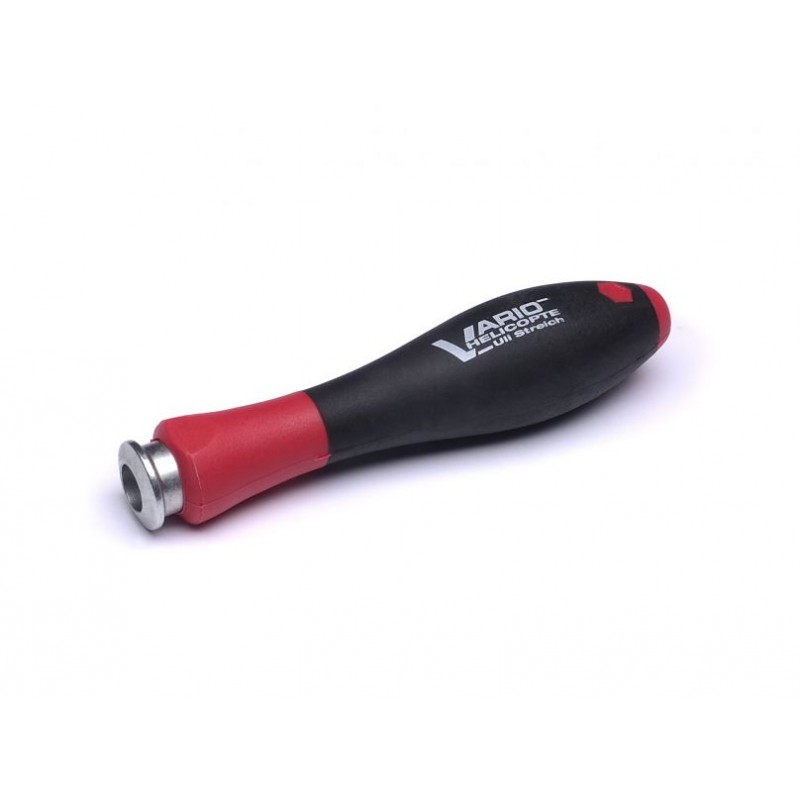
Referencia: 92/91
Rodamiento con orejuela de 6 x 10 x 3 mm
Brida rodamientos autolubricantes 6 x 10 x 3 mm
Ninguna marca
Referencia: 92/91
Brida rodamientos autolubricantes 6 x 10 x 3 mm



Política de seguridad

Política de envío

Política de devolución
No hay reseñas de clientes en este momento.
Riferimento: 90/10
This special file set is particularly useful when you are cutting small openings, as they can be used to work on the tiniest of radii and straight edges. The rotary-action handle makes quick work of swapping individual tools. The collet can also be used to grip drills and taps of 2 to 5 mm ∅.
Riferimento: 107/2
This tiny tool is designed to help you screw pushrods into ball-links. It can either be used in the chuck of an electric drill, in the telescopic handle, or in a 5.5 mm socket. Ball-link driverfor 4 mm telescopic handle.
Riferimento: 11/60
The tubing cutter can handle aluminium, stainless steel and brass tubing up to 15 mm diameter. It can also be used to form a slight internal burr on tubing. For example if you use a tail rotor pushrod running in a PTFE sleeve in aluminium tubing, you can cut the aluminium to length at both ends with the tubing cutter, and the PTFE sleeve will not slip out.
Riferimento: 29/11
Widia produced a tungsten carbide, derived from "like diamond - Wie Diamant (Ger)". The first Widia tools were available on the open market in 1923. They consisted at that time of approx. 94 % tungsten carbide and 6 % cobalt. Today's types contain additives that improve the hardness etc. The Widia disc cutter is ideal for cutting clean-edged openings in...
Riferimento: 11/65
For preparing the GRP surface prior to the paintingP400dimensions: 11.5 x 15 cmPack of 5
Riferimento: 10/77
The primary use for abrasive sponges is for large-area sanding of wooden and GRP components, but they are also excellent for rubbing down filled surfaces when used wet. Abrasive sponges are also useful for fine-sanding of components with sharp edges and rounded surfaces.
Riferimento: 9/5
When handling tools it is in your own interests to read and observe the safety information and constantly to be aware of the possible hazards, before you have a really close encounter with a workpiece which, for whatever reason, flies off. Wear these protective goggles when grinding, turning and machining, and also when you are cutting off steel rod....
Riferimento: 107/0
This tiny tool is designed to help you screw pushrods into ball-links. It can either be used in the chuck of an electric drill, in the telescopic handle, or in a 5.5 mm socket. Ball-link driverwith telescopic handle 11/44
Riferimento: 11/86
Model helicopter building instructions always state pushrod length as measured from ball centre to ball centre.Determining this dimension using conventional measuring tools is not really much more accurate than estimating the length.Pushrod measuring holderpack of 2holders fit any standard calipers
Riferimento: 90/7
How do you fix anything to a wooden component using a metric machine screw? The answer is to fit a captive nut as follows: Drill a hole of the right size to accept the nut barrel, then drive the nut's projecting teeth into the wood using a hammer and fairly gentle force; the captive nut is correctly fitted when its disc rests squarely on the surface of...
Riferimento: 9/11
This handy three-armed gripper acts as a finger-extension for placing screws and nuts in difficult, small and inaccessible places. Three-armed grippertotal length 115 mm
Riferimento: 11/36
Disc cutter set pack of 5 normal variation Wear protective goggles!
Riferimento: 70/20
Our easy-to-use dies are made of top-quality HSS steel. The bevelled entry to the dies ensures that the thread always starts exactly "square" and cuts cleanly. Good thread-cutting oil is as important as the die itself, as it extends the useful life of the tool several times over.
Riferimento: 11/28
If you enjoy building full-fuselage models you cannot help but appreciate practical tools which make your work easier. The glasspaper file is ideal for final trimming of openings for windows, doors and vent grilles after machining them out. The file is 25 cm long overall, with a sanding area 13 cm long and 2.5 cm wide on each side. The file is supplied...
Riferimento: 107/1
This tiny tool is designed to help you screw pushrods into ball-links. It can either be used in the chuck of an electric drill, in the telescopic handle, or in a 5.5 mm socket. Ball-link driverfor 5.5 mm socket spanner
